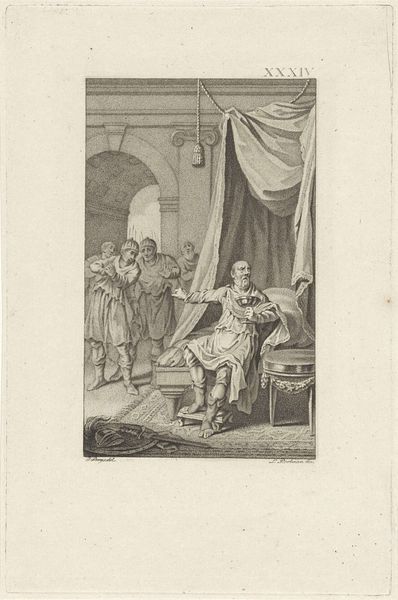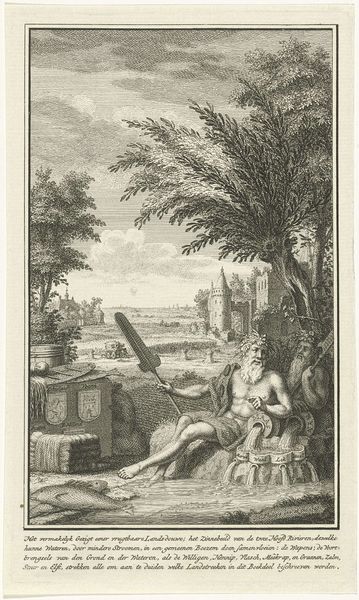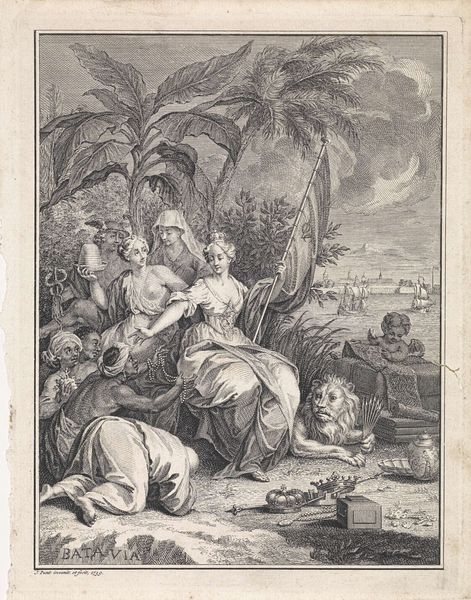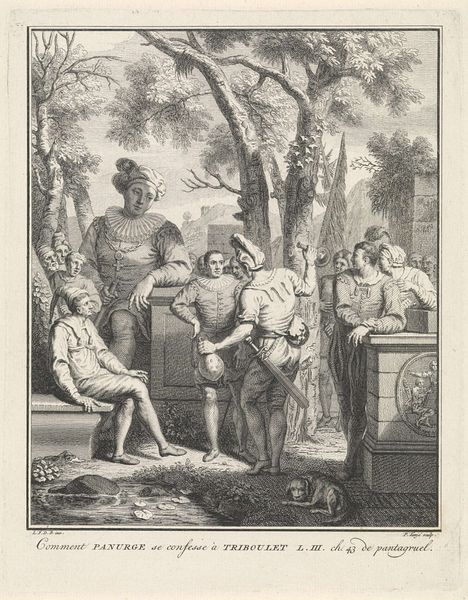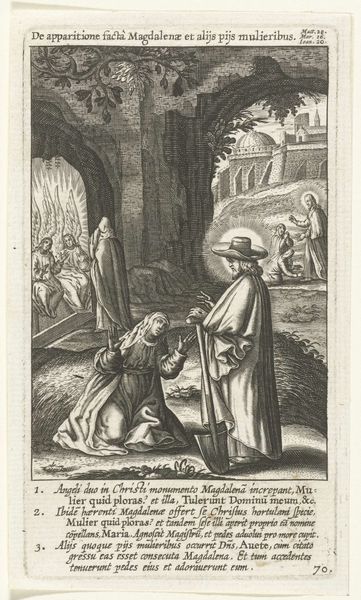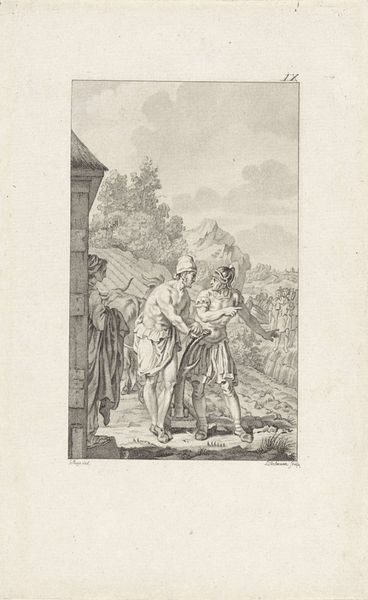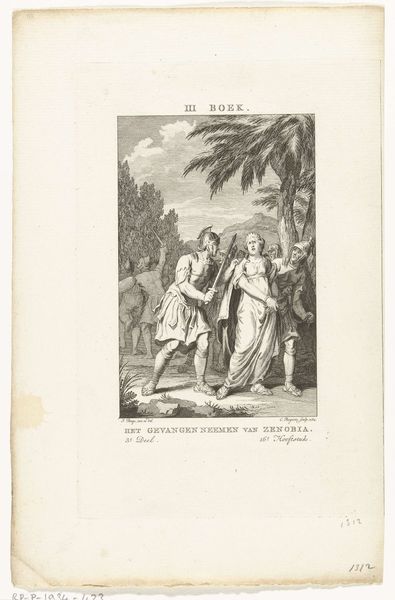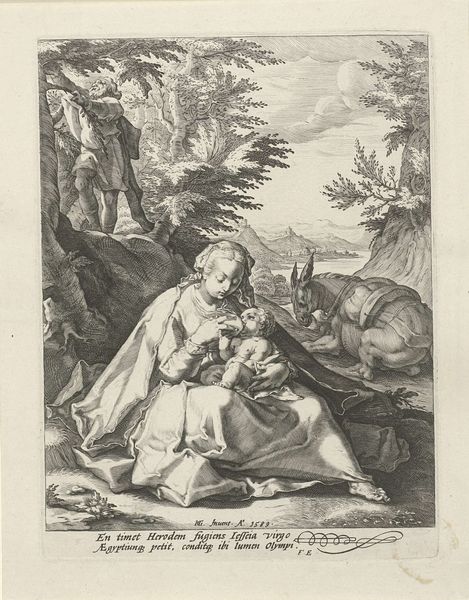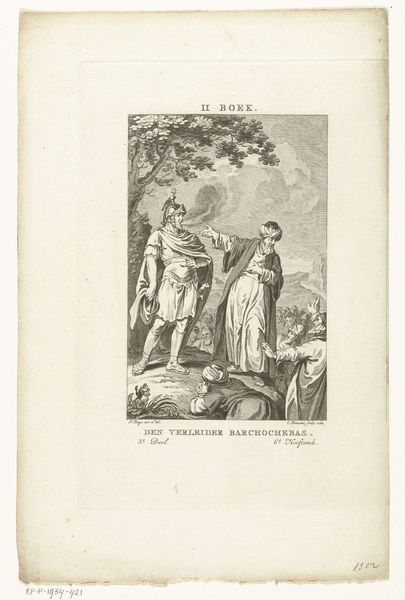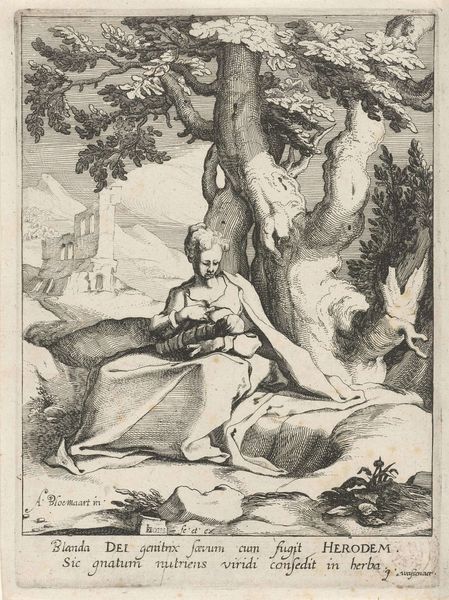
print, engraving
#
narrative-art
#
baroque
# print
#
old engraving style
#
landscape
#
figuration
#
genre-painting
#
history-painting
#
engraving
Dimensions: height 358 mm, width 221 mm
Copyright: Rijks Museum: Open Domain
Curator: What a fascinating engraving! This is "Juda en Tamar", a print made sometime between 1664 and 1783, currently housed in the Rijksmuseum. The tonal gradations achieved with what I understand to be quite basic printmaking technologies for the time are striking. I find the image rather intriguing, almost like a stage play. What stands out to you? Editor: It is theatrical. I see Judah handing Tamar his staff, seal, and cord. The textures of the drapery and the rendering of the landscape are interesting, but I am drawn to the process involved in making this print. What can we say about that process in relation to the subject of the artwork itself? Curator: Excellent question. Engraving is laborious and repetitive. Consider the cultural context: the story from Genesis involving deception and justice through material proof – Judah's seal, staff, and cord. The act of engraving, translating a narrative into a reproducible object, mirrors the story's reliance on physical objects for truth and identity. Who controlled the means of print production, and who consumed these images? Editor: So, you're saying that the act of producing multiple images relates to ideas of dissemination, or in other words how access affects social status and hierarchies. This makes me wonder about its function, maybe as a devotional object, or even a means to show off wealth and connections. Curator: Precisely. It becomes about the ownership and circulation of knowledge, faith, and ultimately, power. Where might such prints have been produced and distributed, and what does the very materiality of the print – the paper, the ink – tell us about these networks? Editor: It’s interesting to think about this Baroque print as not just depicting a story but also being a product deeply embedded in its socio-economic fabric. It definitely challenges a more surface-level understanding. Curator: Agreed. Seeing the work through this lens reveals the inherent connection between material culture, storytelling, and social structures, as well as the modes through which we value or come to know these objects.
Comments
No comments
Be the first to comment and join the conversation on the ultimate creative platform.
